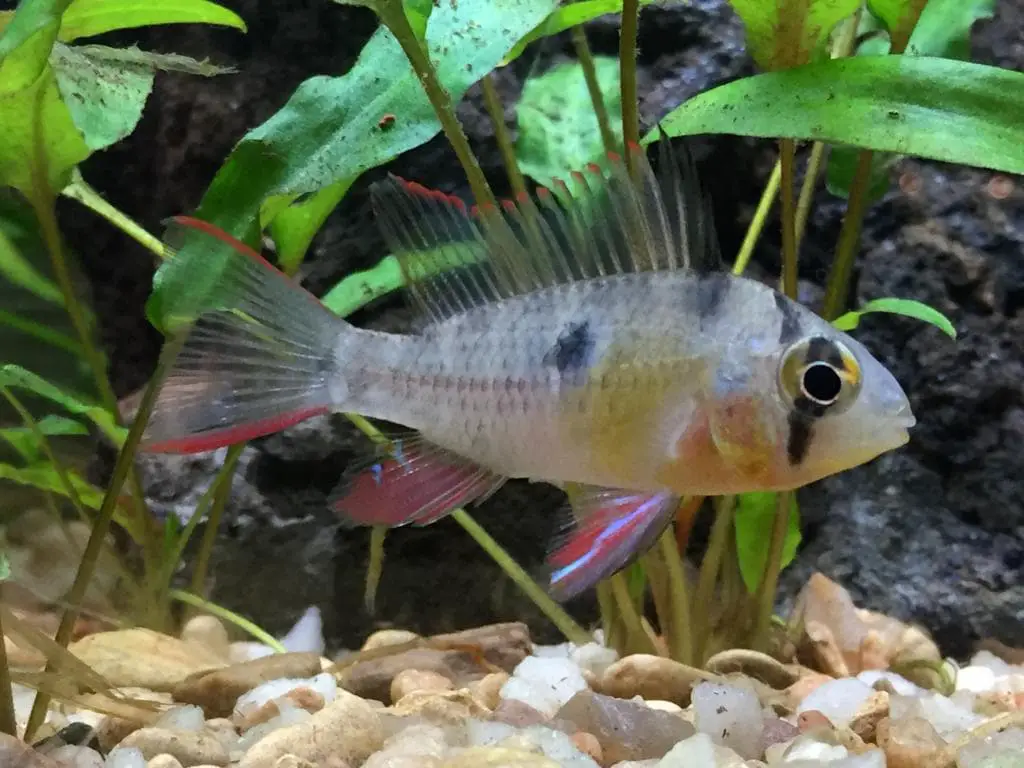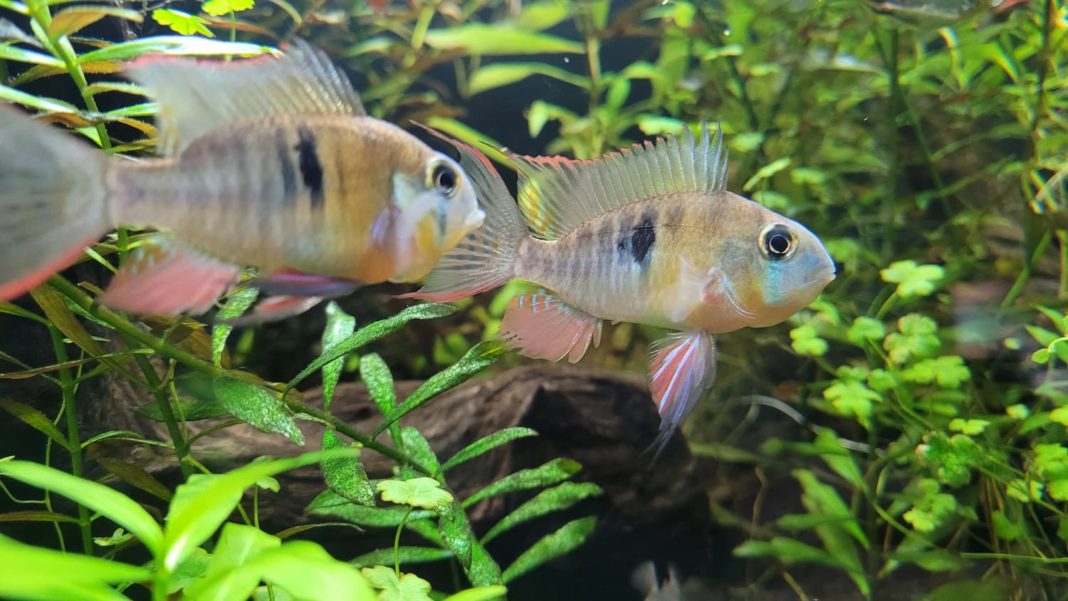Have you recently got a new tank and looking to add a few Bolivian rams, or perhaps you’re looking to stock your tank with more Bolivian Rams? Would adding more Bolivian rams cause fights and overcrowding within the tank? In this post, we’ll cover details to make it possible for you to keep more Bolivian rams.
How Many Bolivian Rams In A 20-Gallon Tank?
In short, you can only keep 2 Bolivian rams in a 20-gallon tank, as long as it’s a male and female. Adding over 2 could only lead to fighting within the tank.
How Much Space Do Bolivian Rams Need?
A pair of Bolivian rams need at least 20 gallons of water in a tank on its own. If you had a bigger tank, you could have added some more Bolivian rams, consider 8 more gallons of space for each additional ram.
- 2 Bolivian ram: 20-30 Gallon tank
- 4 Bolivian Rams: 40 Gallon tank
- 3-4 Bolivian Rams: 50-60 Gallon tank
- 5-6 Bolivian Rams: 70-80 Gallon tank

Do Bolivian Rams Need To Be In A Pair?
While you can keep a single Bolivian ram in a 20-gallon tank, you may be doing a disservice as they prefer to be in pairs to breed and protect their fry. Once the initial ritual of pairing up is complete, you’ll start to notice that their temperament will become even more peaceful.
Although they may try to protect their eggs, the pair of them will not go out of their way to chase nearby tank mates aggressively. Sometimes they aren’t able to pair if a female continuously chases the males away and cannot be compatible.
Can You Keep 2 Male Bolivian Rams In A 20-Gallon Tank?
While males can be more aggressive, keeping 2 male Bolivian rams shouldn’t result in aggression towards each other if there’s no female to fight over.
If there aren’t any females in the tank, 2 male Bolivian rams shouldn’t be aggressive in a spacious tank that has more than one area to rest, hide or stay away from bright lights and other tank mates. If there are 2 males in a tank, then the fighting tends to not be very aggressive.
Can You Keep More Than One Female Bolivian Rams Together?
Compared to other cichlids, Bolivian rams are very peaceful. Therefore, an all-female ram tank can work well if you’re not interested in breeding them.
Just like the males, if there’s no competition for mating, then you will notice the females interacting peacefully, although they won’t school together either. They tend to spend most of their time sifting through the substrate in peace and comfort if your tank is large enough.
Are Bolivian Rams Aggressive?
Compared to other cichlids, Bolivian rams are no where near as aggressive. Many people enjoy keeping Bolivian rams due to their peaceful nature. As they’re bottom dwellers, they don’t really need to compete for food at the surface or middle of the tank. They’re not predatory by nature and prefer spending their time sifting through the tank’s substrate.
The majority of aggression comes from chases, lip locking to fin nipping when 2 males are trying to see who’ll get the chance to breed with a female. Initially, a female may get aggressive with a male during her test to make sure he is strong enough for her and her fry.
What Other Species Can Live With Bolivian Rams?
As Bolivian rams are peaceful and aren’t very big, you should consider stocking similar-sized fish with equal temperaments if possible. The following fish can be suitable tank mates for Bolivian rams:
- Silver Dollar fish
- Emperor Tetras
- Rummy Nose Tetras
- Kuhli Loaches
- Cory Catfish
- Dwarf Gourami
- Cherry Barbs
- Guppies
Bolivian rams are quite hardy with a high tolerance for temperature shifts – just make sure to keep the tank clean.
It’s important to watch out for common parasites in your freshwater tank and make sure you thoroughly clean any additions to the established environment.
The Most Common Reasons Bolivian Rams May Fight Each Other
There are quite a few reasons as to why Bolivian rams will fight with one another. Here are the most common reasons:
Territory
As previously mentioned, compared to other cichlids, Bolivian rams are quite peaceful. It still doesn’t mean that they won’t be territorial, especially if there are not enough live plants or decorations to hide within.
If you have Bolivian rams and they start to fight around or over decorations, plants, rocks, caves, equipment, or the corners of your tank, then you should try to introduce more hiding spots as it will provide more territories for your rams to occupy.
Breeding
Females can be identified as being typically larger and more aggressive than males. Sometimes the females will even chase and attack the males to see whether or not they’re a suitable mate to breed with. If she finds a mate, she’ll stop chasing once they begin the breeding process.
If the female doesn’t choose a male in the tank, she may end up chasing him away or even bullying him for some time.
Water Quality
Bolivian rams like other fish can get stressed out just like humans can, and one of the biggest reasons for stressed out or ill fish is poor water quality. Ammonia or spiking nitrate levels will almost certainly cause Bolivian rams to become aggressive as they’re trying to escape the tank.
Because they can’t escape the tank, it usually leads to more aggressiveness and fighting amongst each other. When ammonia or nitrate levels are high, you should perform 2 or more 50% water changes per week. You will be able to decrease your ammonia level to 0.









